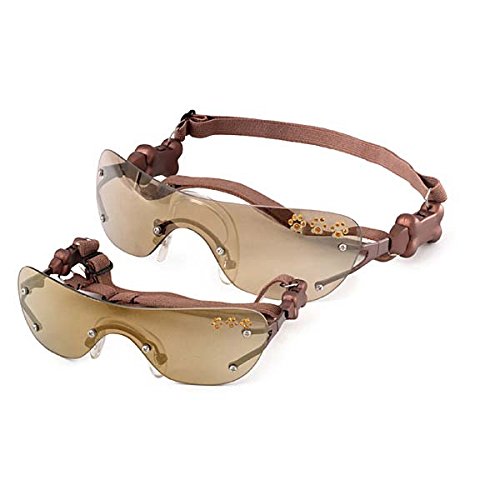
Perhaps it started when your dog stopped wanting to go for long walks. You thought that maybe it was just getting old. But then it started having trouble even walking around the house, and began to look exhausted and shaky after taking a few steps. You also began to notice your dog ‘vomiting’ up food within minutes of eating. If this sounds all too familiar, your dog likely has myasthenia gravis.
We all know that our nerves control our muscle movements. This is because the brain decides to move a muscle and sends that command down through the nerve (in the spinal cord) to the muscle. This ‘command’ is in the form of an electrical wave. If there is a problem with the nerve, the electrical wave will never make it to the muscle. In order for the muscle to move, the command has to cross the gap between the end of the nerve and the muscle. When the electrical wave in the nerve reaches the end of the nerve, a substance called acetycholine is released into the gap. Acetylcholine attaches to receptors on the muscle and causes it to contract. Therefore, acetylcholine is responsible for transmitting the command, which originated in the brain, from the end of the nerve across the gap to the muscle.
The transmission of a command from the brain to the nerve to the muscle is essential for muscle movement. There are many problems that can affect this process. A well-known cause is tetanus, which prevents movement by blocking nerves in the spinal cord and therefore causes severe muscle over-contraction. An animal with tetanus will look very stiff. Tetanus is rare in pets. Botulism is caused by a toxin that blocks the release of acetylcholine into the gap at the nerve-muscle junction. This prevents muscle contraction and the legs look weak because the muscles cannot contract. If the muscles cannot contract, the dog cannot stand. Botulism is rare in Canada.
Myasthenia gravis is similar to botulism. Instead of blocking the release of acetylcholine, in myasthenia gravis the acetylcholine is released normally into the gap but is not allowed to attach to the receptors on the muscle. This produces the same effect as botulism; the muscles cannot contract and therefore look very weak.
There are two causes for myasthenia gravis in dogs. The first is explained above; the body produces a substance that prevents acetylcholine from attaching to the receptors on the muscle. This is the most common cause of myasthenia gravis. Unfortunately we do not know what causes the body to produce this substance. Myasthenia gravis is considered to be an ‘immune-mediated disease’- a condition where the body attacks itself. In this case the body is attacking its own acetylcholine receptors. The other cause for myasthenia gravis is genetic. Some dogs are born with this disease. This is less common. As a side note, cats can also develop myasthenia gravis. In cats, this disease is almost always caused by a cancer (thymoma) in their chest.
No matter what causes myasthenia gravis, it still results in muscle weakness. There can be different muscles involved. In fact, the esophagus muscles are almost always affected. When the esophageal muscles don’t work, this is called ‘megaesophagus’, because the esophagus gets so big that food won’t go into the stomach and instead comes right back up (regurgitation). Regurgitation can easily be confused with vomiting.
Some dogs with myasthenia gravis may only have megaesophagus. Other dogs can have very sudden paralysis of all legs. But more commonly dogs will slowly develop muscle weakness. When you take your dog to the veterinarian, he/she will have to be careful to make sure the weakness is not due to other problems, like arthritis or ligament tears.
Once your dog is diagnosed with myasthenia gravis, you can discuss treatment options with your veterinarian. This disease is not always easy to treat and can eventually become fatal. Most owners choose to treat the disease for a while, at least. The treatment is aimed at increasing the amount of acetylcholine that attaches to the muscle receptors. This drug usually works very well and gives your dog an incredible amount of strength in its legs and allows it to walk again. The only problem is that, with time, some dogs will stop responding to the medication. In these dogs the drug will no longer work.
The megaesophagus is another problem. This symptom generally will not respond to the drug, so the dog must be continually monitored for regurgitation. The danger is that the dog will regurgitate and breath in some food material. This can cause a fatal ‘aspiration pneumonia’ or infection in the lungs from breathing in food. Sadly, this is a common cause of death in dogs with myasthenia gravis.
The future is not bad for all dogs. Some dogs will recover from the disease and will have a mild form of megaesophagus that can easily be handled. Other dogs will respond well to the medication for a long time. Unfortunately, some dogs will need to have a stomach tube put in and will need temporary hospitalization. It is hard to tell which category your dog will fall into. Myasthenia gravis is a serious disease that occurs in many species (including humans) and needs to be treated appropriately. If your dog is diagnosed with myasthenia gravis, you and your veterinarian can work together to help your dog maintain a good quality of life.
By Ashley O’Driscoll – Pets.ca writer
 Caring For Your Golden Doodle
Owning a puppy or a dog can
Caring For Your Golden Doodle
Owning a puppy or a dog can
 My Dog Jumps Up On People
The doorbell rings and next
My Dog Jumps Up On People
The doorbell rings and next
 Fashion For Dogs: Trends and Styles for the Chic Pooch
Is your pooch chic? Then youll need to keep up with the
Fashion For Dogs: Trends and Styles for the Chic Pooch
Is your pooch chic? Then youll need to keep up with the
 Canine Diabetes
Despite diabetes being commo
Canine Diabetes
Despite diabetes being commo
 6 Things Your Dog Needs You to Know About Glaucoma in Dogs
We think of Glaucoma as a pe
6 Things Your Dog Needs You to Know About Glaucoma in Dogs
We think of Glaucoma as a pe
Copyright © 2005-2016 Pet Information All Rights Reserved
Contact us: www162date@outlook.com